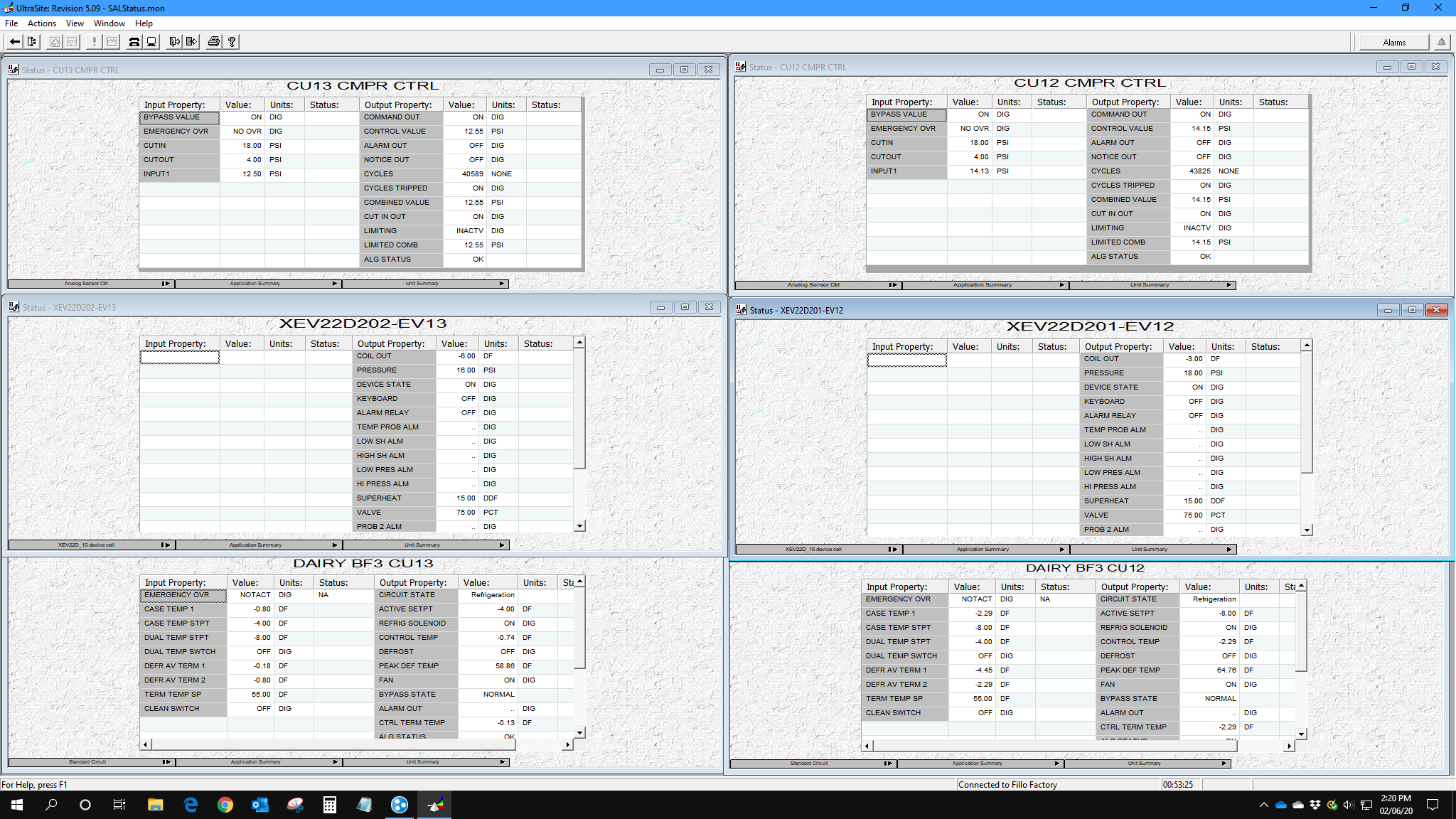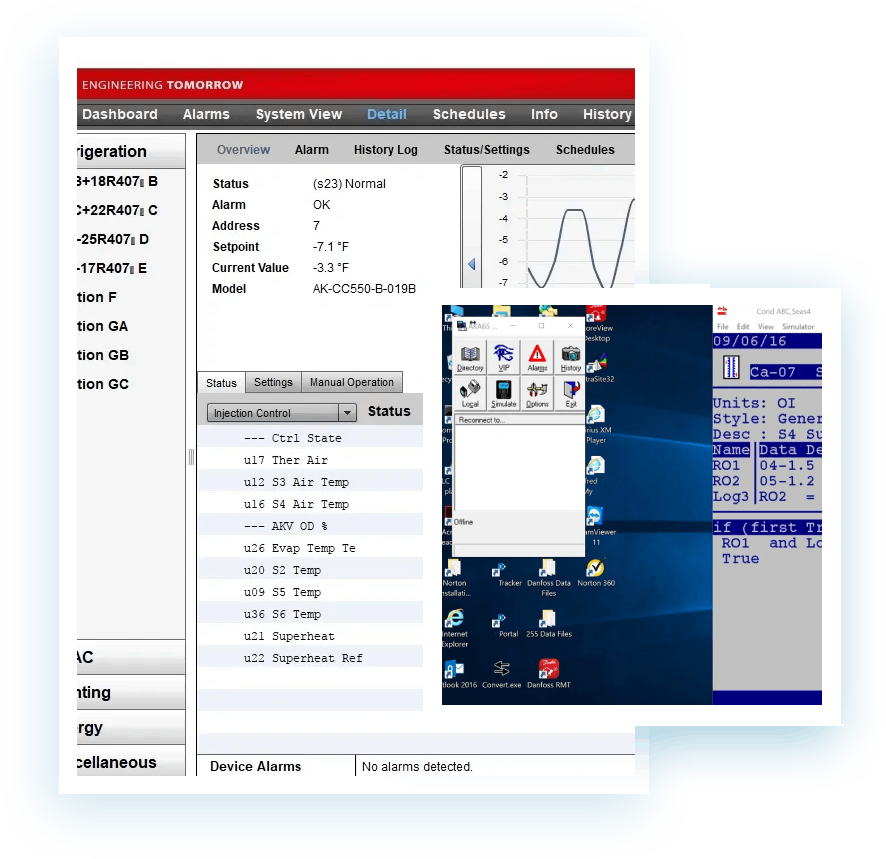Why Controls should drive the Ref/MEP design in Supermarkets
The Value of Hiring an Outside Controls Consultant
By Larry Herman – EMS Consultant
Most EMS customers, architects, general contractors, electrical contractors, and even OEMs could benefit from using an experienced Controls Consultant to help them with their projects. In today’s market, though, it seems like everyone who has worked for a few years in a specialized area hangs out their shingle as a “Consultant.” I do see that there may be a need for this in newly emerging technologies. I myself started out consulting after I left Margaux Controls in the 1980s because the technology was so new that most end-users did not possess the combined knowledge of controls and refrigeration to allow them to properly operate their systems. Today, however, most EMS vendors have done a credible job of documenting the basic operations of their systems. It is the desire to do more than the basics is that really requires the skill, vision, and knowledge of an experienced Controls Consultant.
An experienced Controls Consultant will possess a depth of knowledge in the controls industry, developed over years of working with systems, seeing the multitude of issues with integration and operation, devising strategies taken from many areas of the discipline to address the problems and devise creative solutions that customers demand. They will have a knowledge base rooted in not only controls but also in the systems they are controlling; HVAC, Mechanical, Refrigeration, etc. They should be familiar with a number of systems and should have worked for a large number of customers, using all that experience to identify known trouble points and be able to recommend proven solutions. Having hands-on experience with system design and actual installations would be a necessity.
A Consultant will be a source of ideas and implementation. Having seen the process from initial design to final execution, they should be able to deliver information and solutions that in-house employees do not have the time or exposure to provide. Especially in situations where many employees’ time is “maximized,” there is little if any time available to look for alternative ideas or new concepts. It is more like “head down and grind out the work” mode for most of them. Alternatively, a Consultant will have their head up, looking at the industry, evaluating coming trends, and merging them with their current experience and knowledge base. The Consultant will see the broad spectrum of the industry, whereas the employee is typically responsible for only one part of the process. Additionally, this experience will be invaluable when assisting those who want to aggressively push the envelope as far as energy-saving strategies.
The right Controls Consultant will provide value far exceeding the cost of their services. These services can range from a one-time consultation about a particular problem to the coordination of long-term projects. An example of this was a customer who was building a new store and asked me to look at the prints for a quick controls evaluation. I reviewed the prints, went to the job site, and talked to operations. For two days’ worth of my time, I found a redundancy that we eliminated to save them 5 times that amount of money. Besides reducing redundancy, other important areas of service are blueprint redlining to scope, control integration, the avoidance of loopholes between trades, value engineering, the balance between saving and monitoring, and various other application issues. Many companies can and should take advantage of the “a la carte” services that the Consultant has to offer. Architects can use them for print review, OEMs for application analysis, general contractors for job buyout de-scoping and technical questions, electrical contractors for immediate controls expertise, and customers to support their own in-house efforts and to bring in new ideas, develop special projects and help drive innovation. In short, there is specialized knowledge available vis-a-vie the Controls Consultant waiting to help you with whatever portion of this industry you work with, and you will spend less and get better overall results if you take advantage of their services.
Most EMS customers, architects, general contractors, electrical contractors, and even OEMs could benefit from using an experienced Controls Consultant to help them with their projects. In today’s market, though, it seems like everyone who has worked for a few years in a specialized area hangs out their shingle as a “Consultant.” I do see that there may be a need for this in newly emerging technologies. I myself started out consulting after I left Margaux Controls in the 1980s because the technology was so new that most end-users did not possess the combined knowledge of controls and refrigeration to allow them to properly operate their systems. Today, however, most EMS vendors have done a credible job of documenting the basic operations of their systems. It is the desire to do more than the basics is that really requires the skill, vision, and knowledge of an experienced Controls Consultant.
An experienced Controls Consultant will possess a depth of knowledge in the controls industry, developed over years of working with systems, seeing the multitude of issues with integration and operation, devising strategies taken from many areas of the discipline to address the problems and devise creative solutions that customers demand. They will have a knowledge base rooted in not only controls but also in the systems they are controlling; HVAC, Mechanical, Refrigeration, etc. They should be familiar with a number of systems and should have worked for a large number of customers, using all that experience to identify known trouble points and be able to recommend proven solutions. Having hands-on experience with system design and actual installations would be a necessity.
A Consultant will be a source of ideas and implementation. Having seen the process from initial design to final execution, they should be able to deliver information and solutions that in-house employees do not have the time or exposure to provide. Especially in situations where many employees’ time is “maximized,” there is little if any time available to look for alternative ideas or new concepts. It is more like “head down and grind out the work” mode for most of them. Alternatively, a Consultant will have their head up, looking at the industry, evaluating coming trends, and merging them with their current experience and knowledge base. The Consultant will see the broad spectrum of the industry, whereas the employee is typically responsible for only one part of the process. Additionally, this experience will be invaluable when assisting those who want to aggressively push the envelope as far as energy-saving strategies.
The right Controls Consultant will provide value far exceeding the cost of their services. These services can range from a one-time consultation about a particular problem to the coordination of long-term projects. An example of this was a customer who was building a new store and asked me to look at the prints for a quick controls evaluation. I reviewed the prints, went to the job site, and talked to operations. For two days’ worth of my time, I found a redundancy that we eliminated to save them 5 times that amount of money. Besides reducing redundancy, other important areas of service are blueprint redlining to scope, control integration, the avoidance of loopholes between trades, value engineering, the balance between saving and monitoring, and various other application issues. Many companies can and should take advantage of the “a la carte” services that the Consultant has to offer. Architects can use them for print review, OEMs for application analysis, general contractors for job buyout de-scoping and technical questions, electrical contractors for immediate controls expertise, and customers to support their own in-house efforts and to bring in new ideas, develop special projects and help drive innovation. In short, there is specialized knowledge available vis-a-vie the Controls Consultant waiting to help you with whatever portion of this industry you work with, and you will spend less and get better overall results if you take advantage of their services.


